Abstract
It has been stated by McDonagh, Palma & Lightner [(1982) J. Am. Chem. Soc. 104, 6867-6871] that complexing of bilirubin with serum albumin has a marked species-dependent influence on bilirubin photoisomerization in vitro and in vivo. Therefore the kinetics for the quantitatively important reaction: (Formula: see text) of the photochemical interconversion between bilirubin and its photoisomers bound to human or rat serum albumin in aqueous solution, assayed by h.p.l.c., was used to elucidate the observed species-dependent difference. The relative rate constants for bilirubin bound to human serum albumin, except for k4, the rate of interconversion from (ZZ)-bilirubin into (EZ)-bilirubin, proved to be considerably larger than those for bilirubin bound to rat serum albumin. In accordance with these rate constants, the formation of photoisomers of bilirubin bound to human serum albumin, except for (EZ)-bilirubin, is very rapid and much greater than that for bilirubin bound to rat serum albumin.
Full text
PDF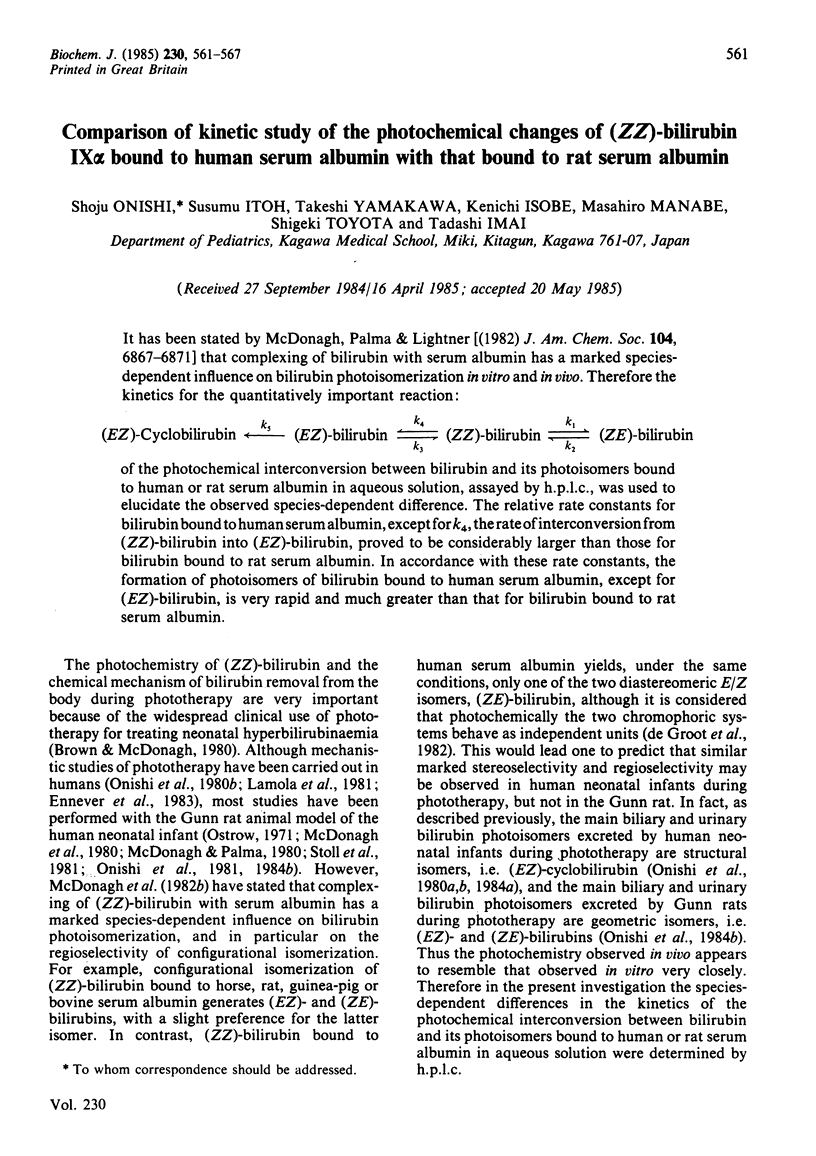
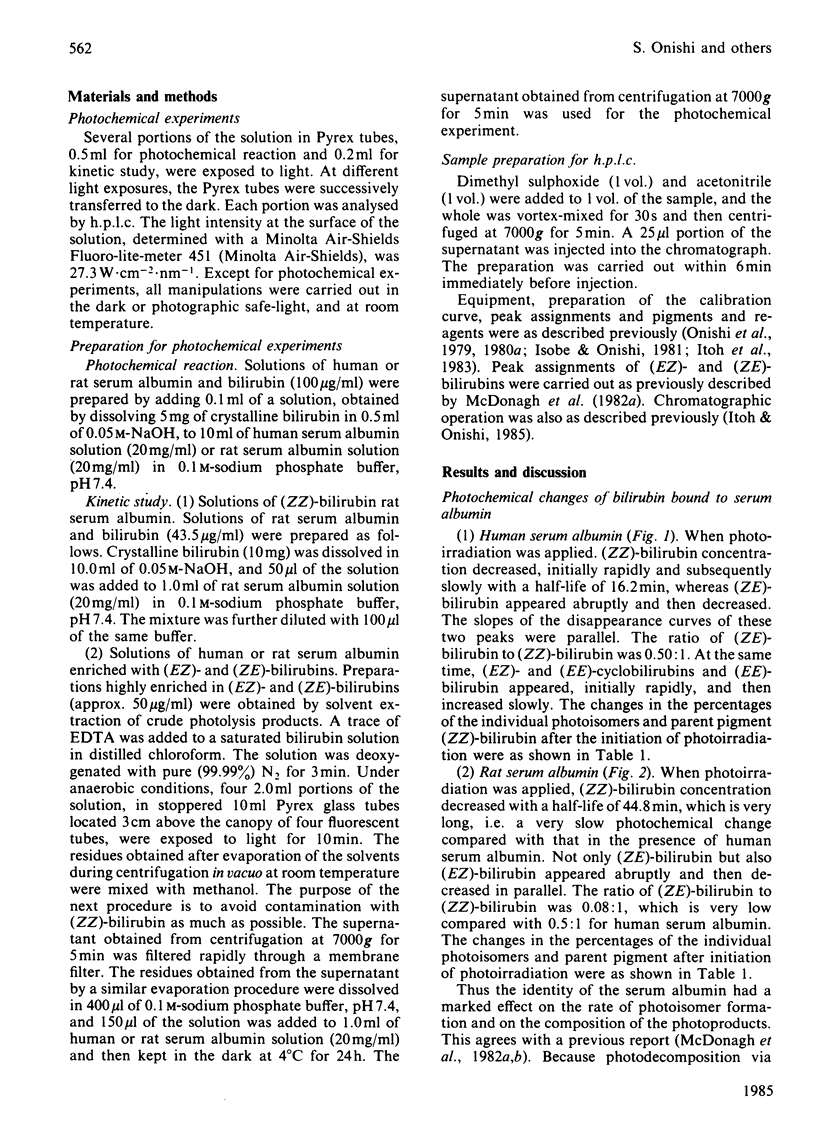
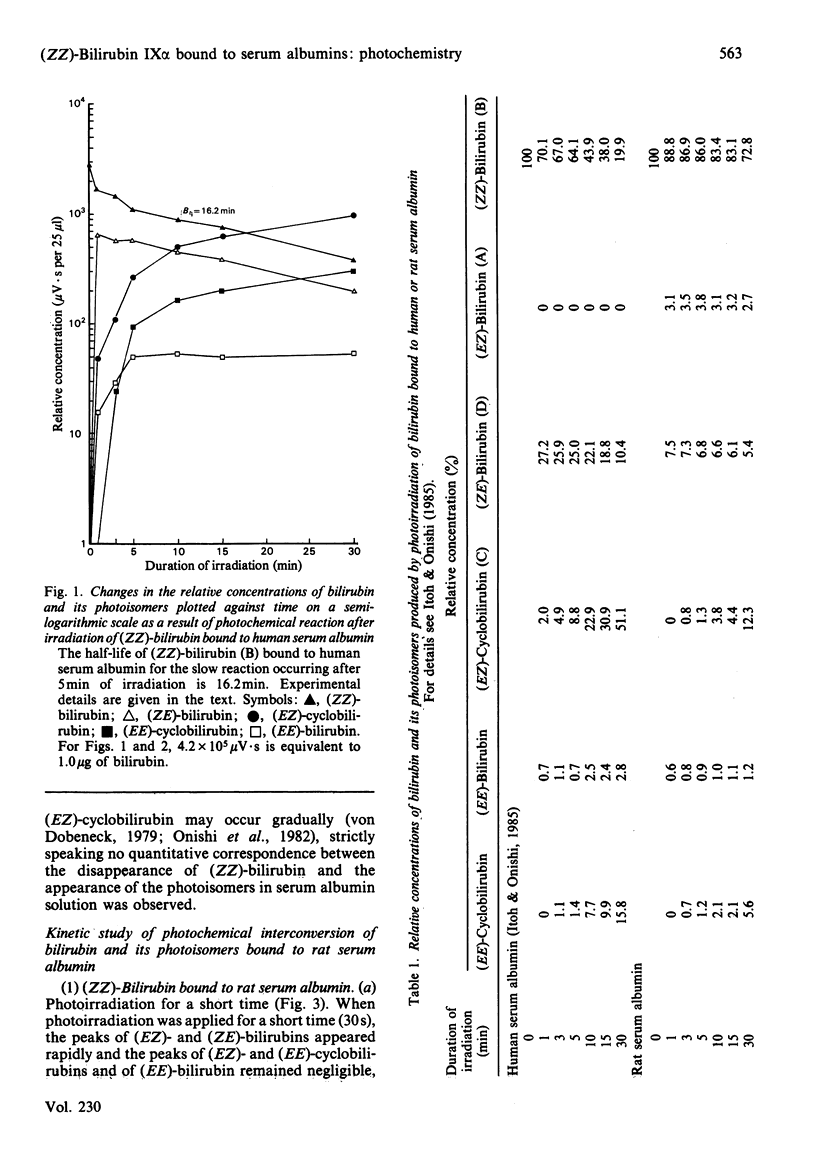
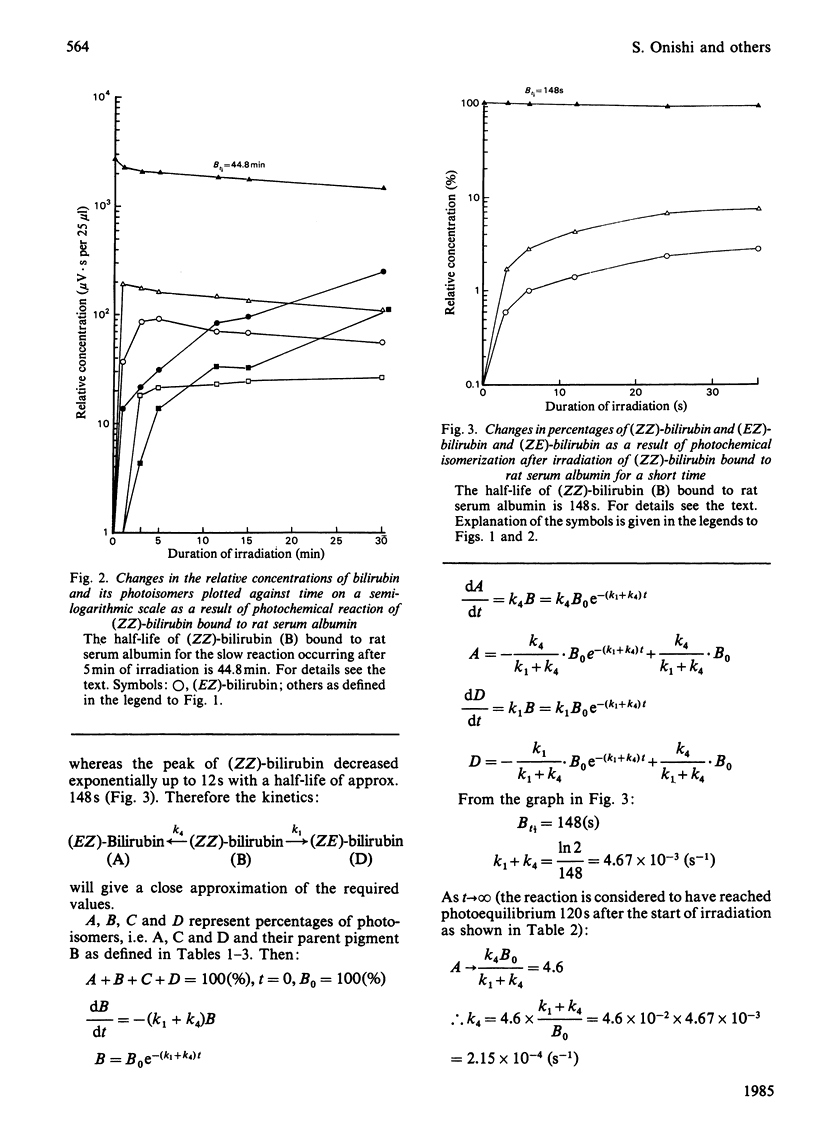
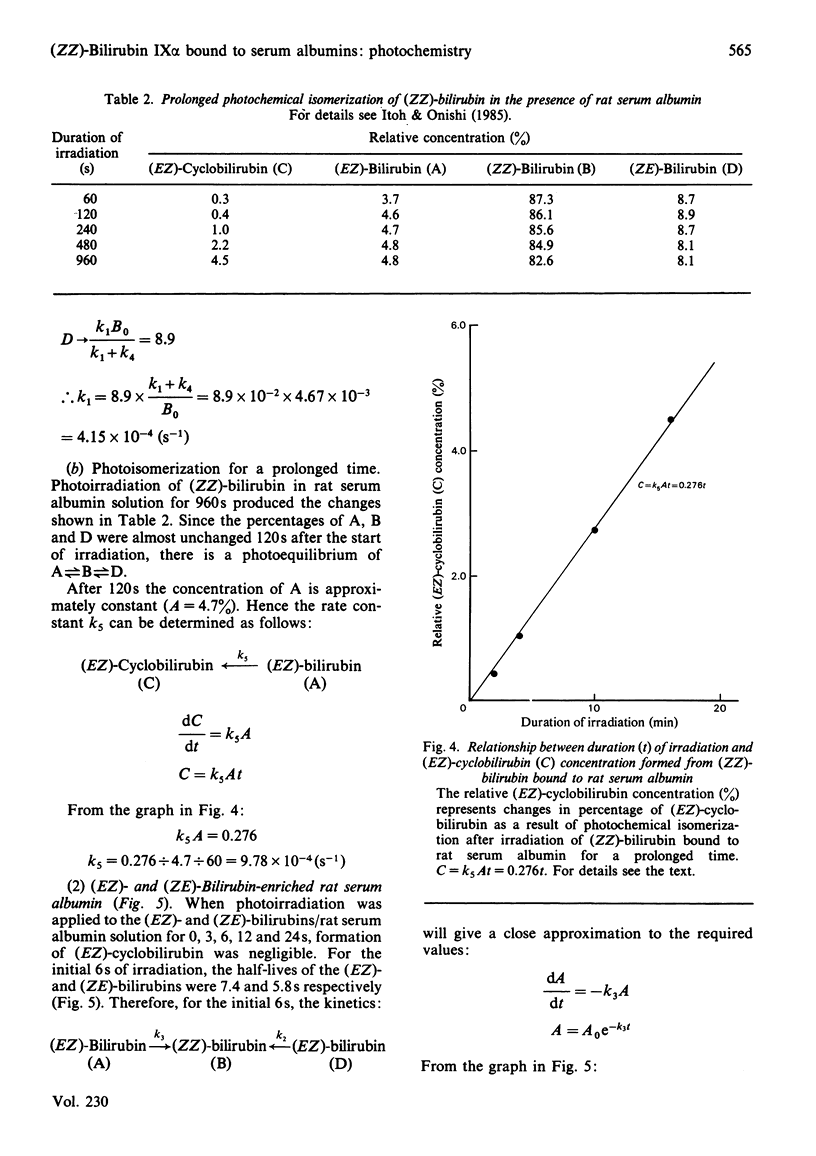
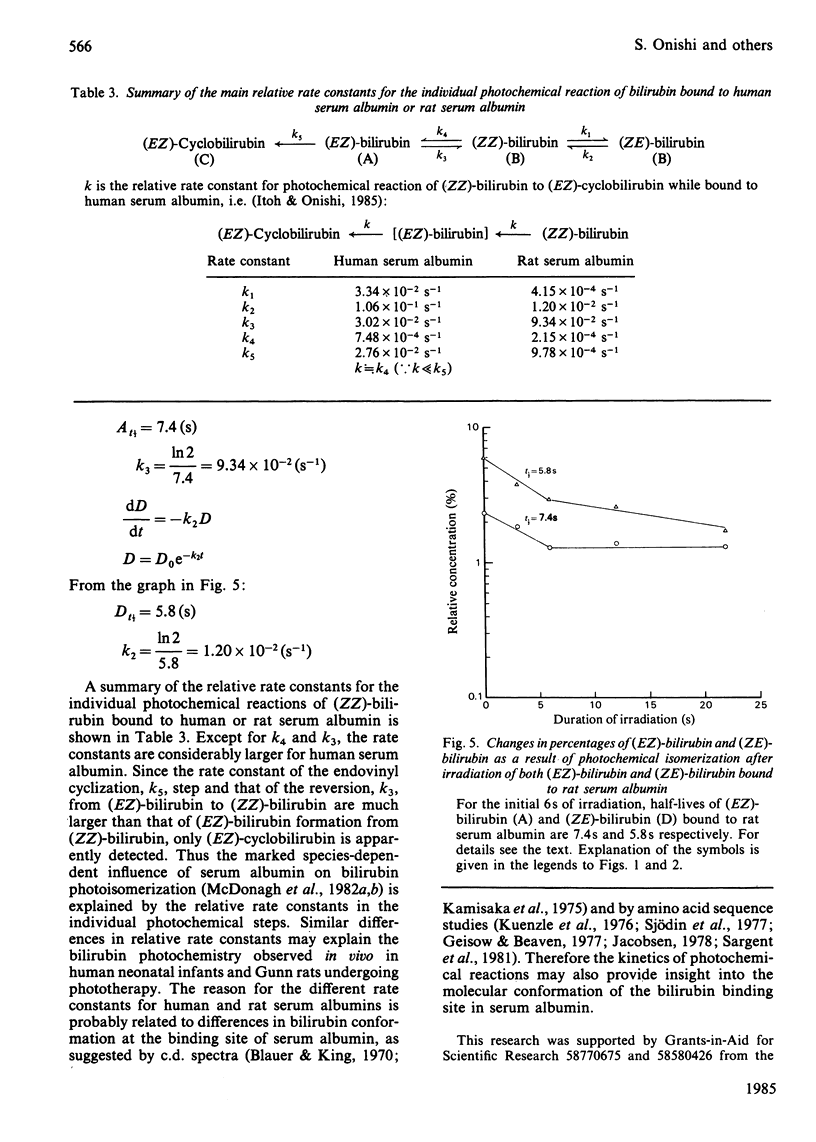
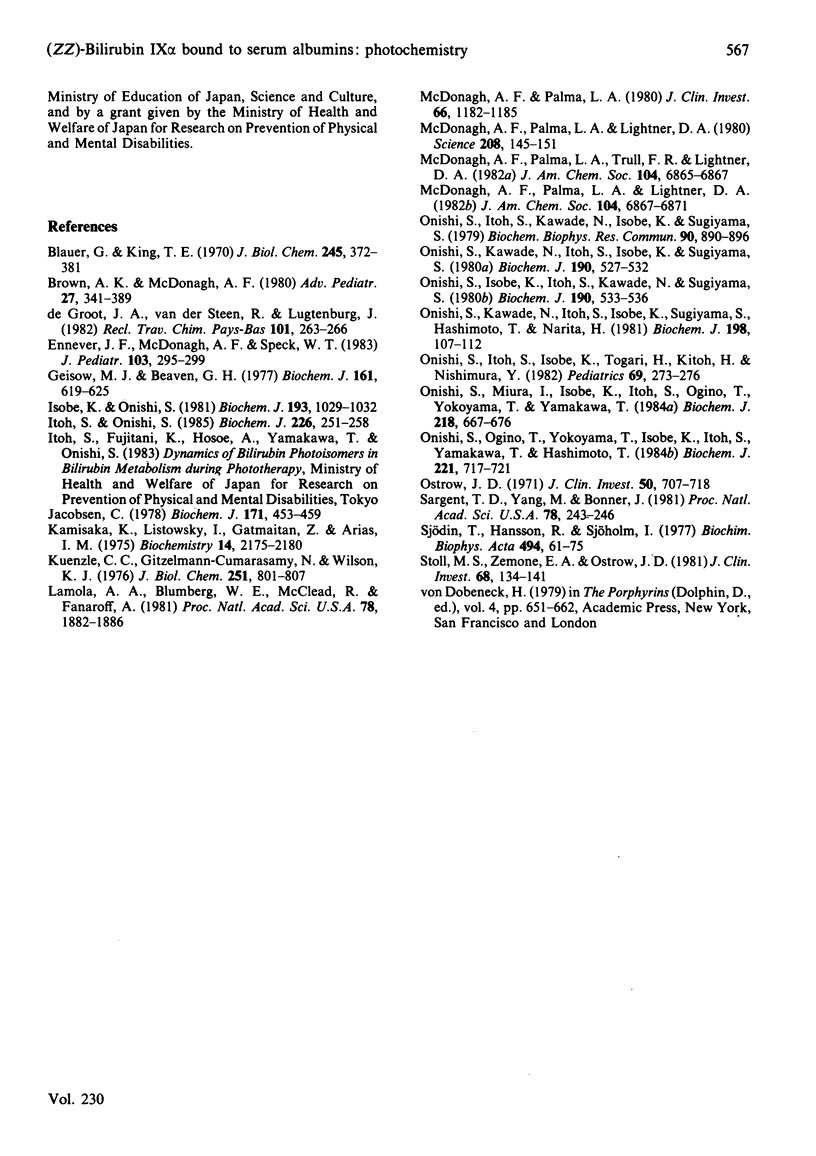
Selected References
These references are in PubMed. This may not be the complete list of references from this article.
- Blauer G., King T. E. Interactions of bilirubin with bovine serum albumin in aqueous solution. J Biol Chem. 1970 Jan 25;245(2):372–381. [PubMed] [Google Scholar]
- Brown A. K., McDonagh A. F. Phototherapy for neonatal hyperbilirubinemia: efficacy, mechanism and toxicity. Adv Pediatr. 1980;27:341–389. [PubMed] [Google Scholar]
- Ennever J. F., McDonagh A. F., Speck W. T. Phototherapy for neonatal jaundice: optimal wavelengths of light. J Pediatr. 1983 Aug;103(2):295–299. doi: 10.1016/s0022-3476(83)80370-9. [DOI] [PubMed] [Google Scholar]
- Geisow M. J., Beaven G. H. Large fragments of human serum albumin. Biochem J. 1977 Mar 1;161(3):619–625. doi: 10.1042/bj1610619. [DOI] [PMC free article] [PubMed] [Google Scholar]
- Isobe K., Onishi S. Kinetics of the photochemical interconversion among geometric photoisomers of bilirubin. Biochem J. 1981 Mar 1;193(3):1029–1031. doi: 10.1042/bj1931029. [DOI] [PMC free article] [PubMed] [Google Scholar]
- Itoh S., Onishi S. Kinetic study of the photochemical changes of (ZZ)-bilirubin IX alpha bound to human serum albumin. Demonstration of (EZ)-bilirubin IX alpha as an intermediate in photochemical changes from (ZZ)-bilirubin IX alpha to (EZ)-cyclobilirubin IX alpha. Biochem J. 1985 Feb 15;226(1):251–258. doi: 10.1042/bj2260251. [DOI] [PMC free article] [PubMed] [Google Scholar]
- Jacobsen C. Lysine residue 240 of human serum albumin is involved in high-affinity binding of bilirubin. Biochem J. 1978 May 1;171(2):453–459. doi: 10.1042/bj1710453. [DOI] [PMC free article] [PubMed] [Google Scholar]
- Kamisaka K., Listowsky I., Gatmaitan Z., Arias I. M. Interactions of bilirubin and other ligands with ligandin. Biochemistry. 1975 May 20;14(10):2175–2180. doi: 10.1021/bi00681a021. [DOI] [PubMed] [Google Scholar]
- Kuenzle C. C., Gitzelmann-Cumarasamy N., Wilson K. J. Affinity labeling of the primary bilirubin binding site of human serum albumin. J Biol Chem. 1976 Feb 10;251(3):801–807. [PubMed] [Google Scholar]
- Lamola A. A., Blumberg W. E., McClead R., Fanaroff A. Photoisomerized bilirubin in blood from infants receiving phototherapy. Proc Natl Acad Sci U S A. 1981 Mar;78(3):1882–1886. doi: 10.1073/pnas.78.3.1882. [DOI] [PMC free article] [PubMed] [Google Scholar]
- McDonagh A. F., Palma L. A. Hepatic excretion of circulating bilirubin photoproducts in the Gunn rat. J Clin Invest. 1980 Nov;66(5):1182–1185. doi: 10.1172/JCI109951. [DOI] [PMC free article] [PubMed] [Google Scholar]
- McDonagh A. F., Palma L. A., Lightner D. A. Blue light and bilirubin excretion. Science. 1980 Apr 11;208(4440):145–151. doi: 10.1126/science.7361112. [DOI] [PubMed] [Google Scholar]
- Onishi S., Isobe K., Itoh S., Kawade N., Sugiyama S. Demonstration of a geometric isomer of bilirubin-IX alpha in the serum of a hyperbilirubinaemic newborn infant and the mechanism of jaundice phototherapy. Biochem J. 1980 Sep 15;190(3):533–536. doi: 10.1042/bj1900533. [DOI] [PMC free article] [PubMed] [Google Scholar]
- Onishi S., Itoh S., Isobe K., Togari H., Kitoh H., Nishimura Y. Mechanism of development of bronze baby syndrome in neonates treated with phototherapy. Pediatrics. 1982 Mar;69(3):273–276. [PubMed] [Google Scholar]
- Onishi S., Itoh S., Kawade N., Isobe K., Sugiyama S. The separation of configurational isomers of bilirubin by high pressure liquid chromatography and the mechanism of jaundice phototherapy. Biochem Biophys Res Commun. 1979 Oct 12;90(3):890–896. doi: 10.1016/0006-291x(79)91911-9. [DOI] [PubMed] [Google Scholar]
- Onishi S., Kawade N., Itoh S., Isobe K., Sugiyama S., Hashimoto T., Narita H. Kinetics of biliary excretion of the main two bilirubin photoproducts after injection into Gunn rats. Biochem J. 1981 Jul 15;198(1):107–112. doi: 10.1042/bj1980107. [DOI] [PMC free article] [PubMed] [Google Scholar]
- Onishi S., Kawade N., Itoh S., Isobe K., Sugiyama S. High-pressure liquid chromatographic analysis of anaerobic photoproducts of bilirubin-IX alpha in vitro and its comparison with photoproducts in vivo. Biochem J. 1980 Sep 15;190(3):527–532. doi: 10.1042/bj1900527. [DOI] [PMC free article] [PubMed] [Google Scholar]
- Onishi S., Miura I., Isobe K., Itoh S., Ogino T., Yokoyama T., Yamakawa T. Structure and thermal interconversion of cyclobilirubin IX alpha. Biochem J. 1984 Mar 15;218(3):667–676. doi: 10.1042/bj2180667. [DOI] [PMC free article] [PubMed] [Google Scholar]
- Onishi S., Ogino T., Yokoyama T., Isobe K., Itoh S., Yamakawa T., Hashimoto T. Biliary and urinary excretion rates and serum concentration changes of four bilirubin photoproducts in Gunn rats during total darkness and low or high illumination. Biochem J. 1984 Aug 1;221(3):717–721. doi: 10.1042/bj2210717. [DOI] [PMC free article] [PubMed] [Google Scholar]
- Ostrow J. D. Photocatabolism of labeled bilirubin in the congenitally jaundiced (Gunn) rat. J Clin Invest. 1971 Mar;50(3):707–718. doi: 10.1172/JCI106541. [DOI] [PMC free article] [PubMed] [Google Scholar]
- Sargent T. D., Yang M., Bonner J. Nucleotide sequence of cloned rat serum albumin messenger RNA. Proc Natl Acad Sci U S A. 1981 Jan;78(1):243–246. doi: 10.1073/pnas.78.1.243. [DOI] [PMC free article] [PubMed] [Google Scholar]
- Sjödin T., Hansson R., Sjöholm I. Isolation and identification of a trypsin-resistant fragment of human serum albumin with bilirubin- and drug-binding properties. Biochim Biophys Acta. 1977 Sep 27;494(1):61–75. doi: 10.1016/0005-2795(77)90135-0. [DOI] [PubMed] [Google Scholar]
- Stoll M. S., Zenone E. A., Ostrow J. D. Excretion of administered and endogenous photobilirubins in the bile of the jaundice gunn rat. J Clin Invest. 1981 Jul;68(1):134–141. doi: 10.1172/JCI110229. [DOI] [PMC free article] [PubMed] [Google Scholar]


